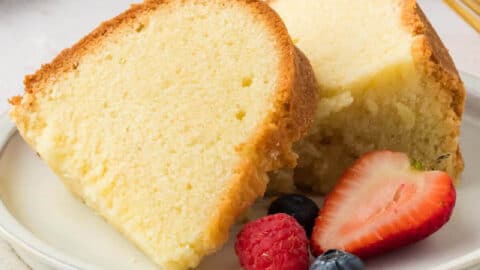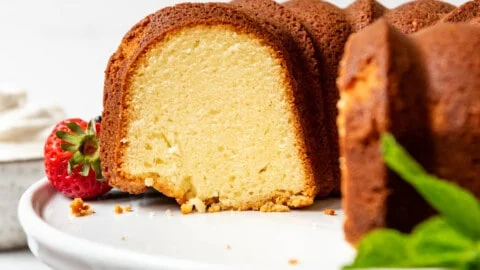Cheese pound cake is a delightful treat loved by many, but working with it can present challenges that require attention and skill.
Whether you’re a home baker or a professional pastry chef, understanding these common issues will help you create the perfect cheese pound cake every time.

Understanding the Ingredients
To begin with, mastering the art of cheese pound cake starts with understanding its ingredients.
Typically, you’ll need flour, sugar, butter, eggs, and of course, cheese. The type and quality of these ingredients can significantly impact the final product.
Achieving the Right Texture
One of the primary challenges when working with cheese pound cake is achieving the perfect texture.
The cake should be dense yet moist, with a tender crumb. Balancing the amount of cheese and other ingredients is crucial to achieving this ideal texture.
Preventing Overmixing
Overmixing the batter can lead to a tough and dense cake.
It’s essential to mix the ingredients just until they are incorporated to avoid developing too much gluten, which can result in a chewy texture rather than a tender one.
Avoiding Sinking Cheese
Cheese can sometimes sink to the bottom of the cake during baking, creating an uneven distribution.
To prevent this, toss the cheese in a small amount of flour before folding it into the batter.
This helps the cheese stay suspended throughout the cake.
Baking Techniques
Ensuring Even Baking
Achieving even baking can be challenging, especially with a dense cake like cheese pound cake.
Positioning the cake in the center of the oven and rotating it halfway through baking can help promote even heat distribution and prevent overbaking on one side.
Testing for Doneness
Testing cheese pound cake for doneness can be tricky due to its dense nature.
A toothpick inserted into the center should come out clean or with a few moist crumbs attached, indicating that the cake is baked through without being overdone.
Flavor and Moisture
Balancing Sweetness with Cheese Flavor
Finding the right balance between sweetness and the savory richness of cheese is key.
Too much sugar can overpower the cheese flavor, while too little can result in a bland cake.
Experimenting with different cheese types and sweetness levels can help achieve the desired taste.
Moisture Retention
Cheese pound cake can sometimes become dry if not stored properly.
To retain moisture, store the cake in an airtight container at room temperature or in the refrigerator.
Adding a simple syrup or glaze can also help keep the cake moist.

Troubleshooting and Solutions
Cracking on Top
Cheese pound cake may crack on top during baking due to rapid expansion and uneven heat distribution.
To prevent cracking, lower the baking temperature slightly and avoid opening the oven door too often during baking.
Dealing with Sticking to the Pan
Sticking to the pan can be frustrating when trying to remove the cake.
Greasing and flouring the pan thoroughly before adding the batter can help prevent sticking.
Alternatively, using parchment paper liners can make removing the cake easier.
Storage and Shelf Life
Storing cheese pound cake properly is essential for maintaining its freshness.
It can typically be stored at room temperature for a few days or refrigerated for up to a week.
Freezing individual slices wrapped tightly in plastic wrap and foil can extend its shelf life.
Conclusion
Mastering cheese pound cake requires patience, attention to detail, and a willingness to experiment with different techniques and ingredients.
By understanding and addressing these common issues, you can overcome challenges and create a delicious cheese pound cake that will delight your taste buds.

FAQs About Working with Cheese Pound Cake
Q1: Can I use different types of cheese in a pound cake?
A1: Yes, experimenting with different cheeses can yield unique flavors.
Just ensure the cheese is finely grated or crumbled for even distribution.
Q2: How can I prevent my cheese pound cake from becoming too dense?
A2: Avoid overmixing the batter and incorporate the cheese gently.
Also, ensure your leavening agents are fresh and properly measured.
Q3: What should I do if my cake is browning too quickly on top?
A3: Tent the cake with aluminum foil halfway through baking to prevent over-browning while allowing it to finish baking.
Q4: How do I know when my cheese pound cake is perfectly baked?
A4: Use the toothpick test—insert it into the center of the cake, and if it comes out clean or with a few moist crumbs, the cake is done.
Q5: Can I freeze cheese pound cake for later consumption?
A5: Yes, you can freeze cheese pound cake.
Wrap individual slices tightly in plastic wrap and foil before freezing to maintain freshness.